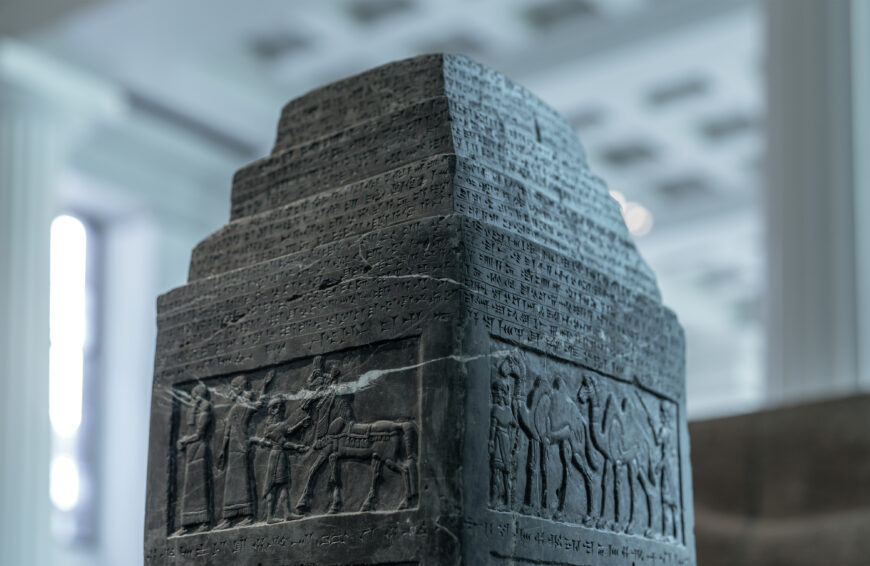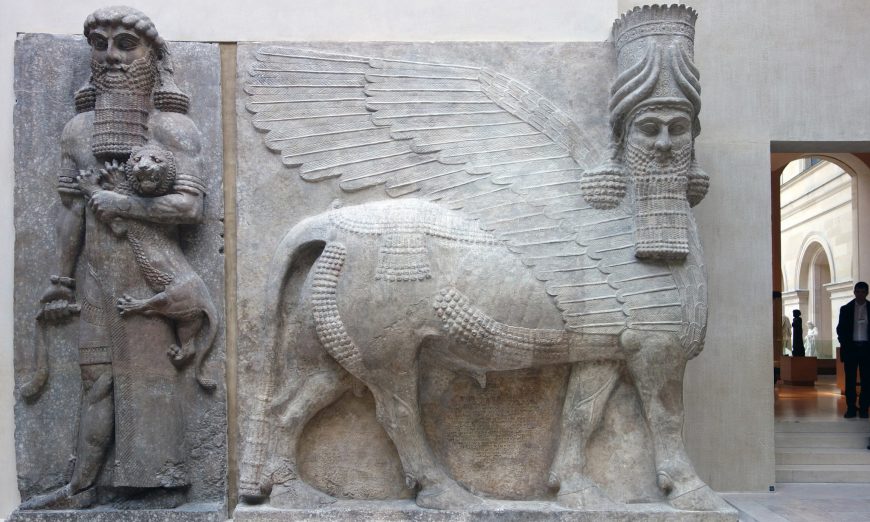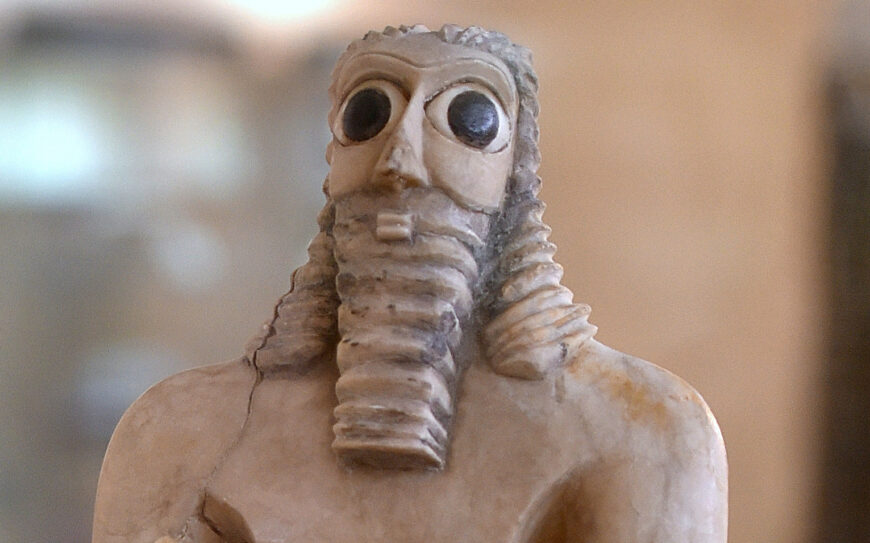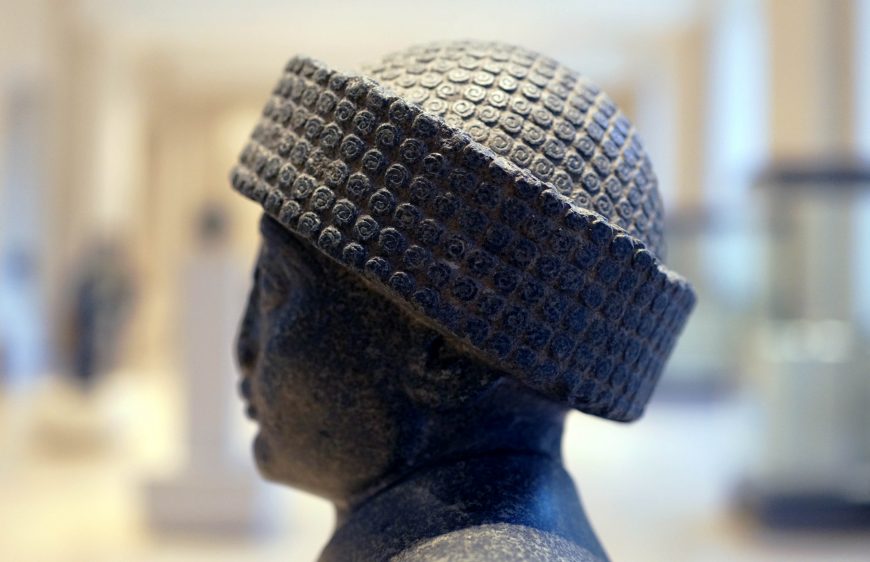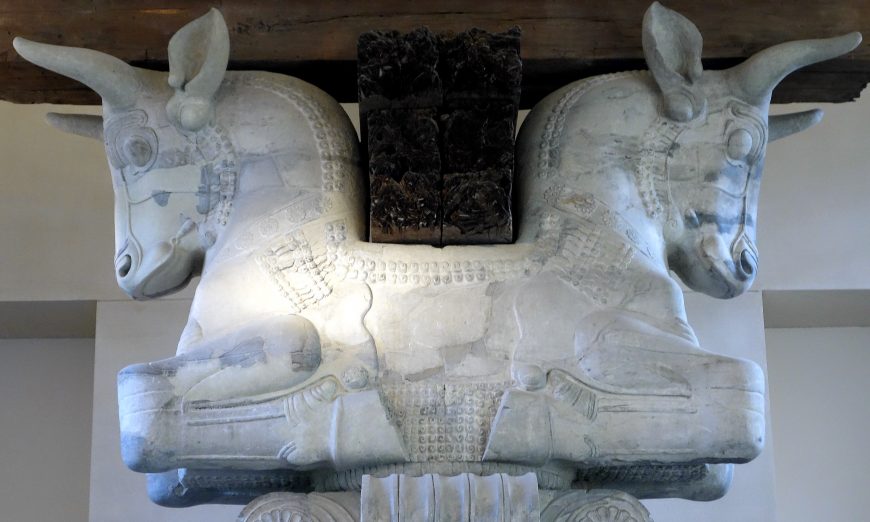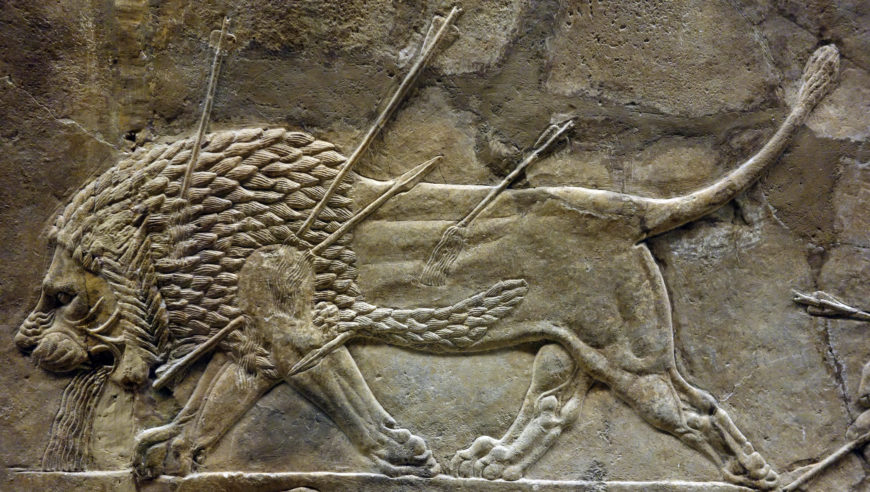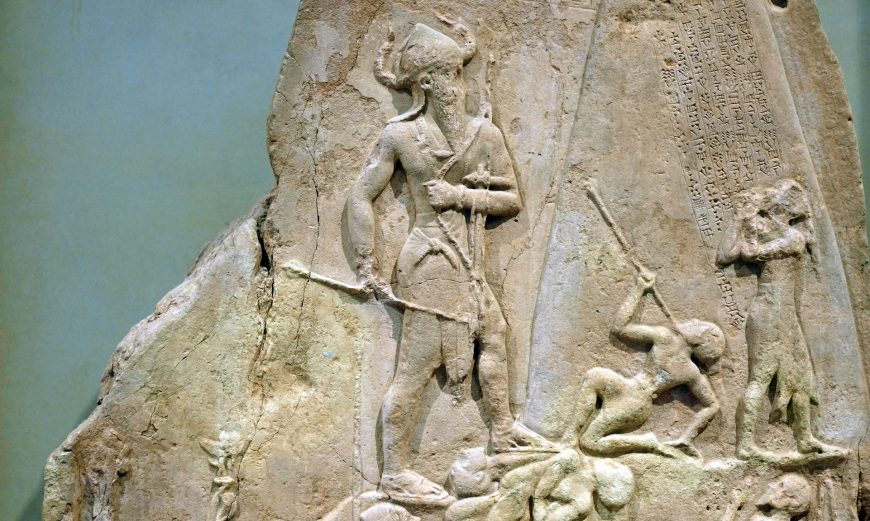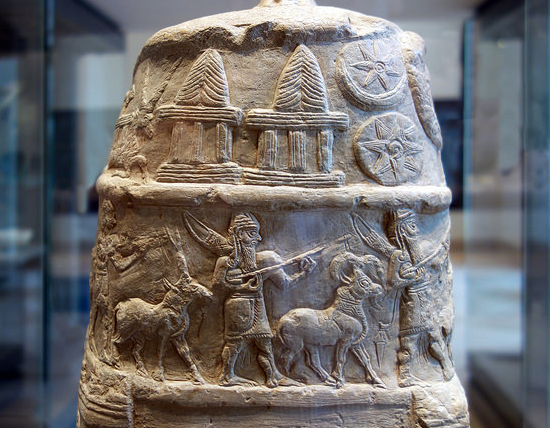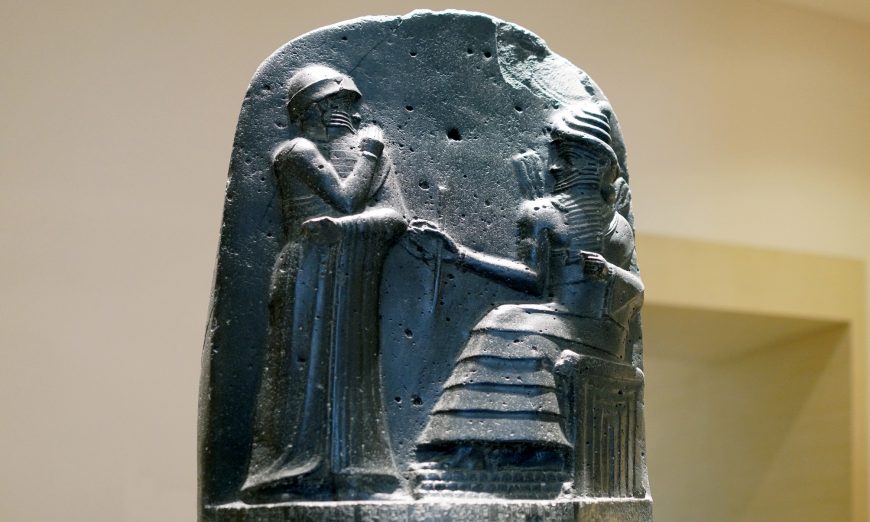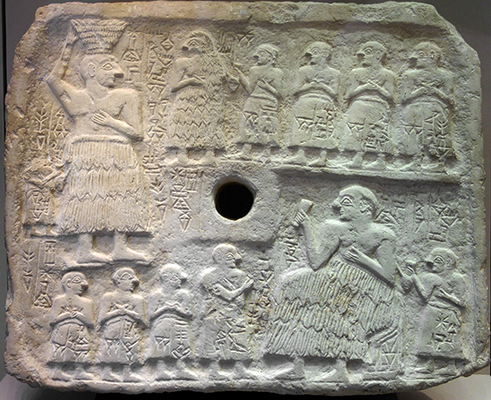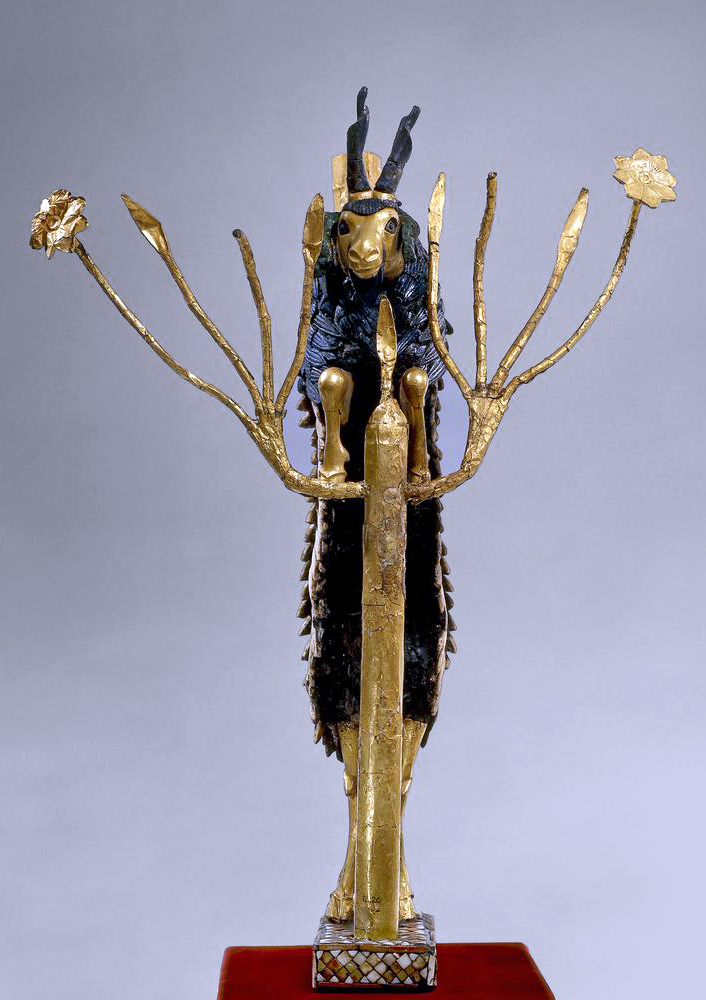
‘Ram in a Thicket’ (also referred to as a goat and flowering plant), about 2600–2400 B.C.E., Sumerian, found in tomb PG 1237, Royal Tombs of Ur, southern Iraq, gold, silver, lapis lazuli, shell, bitumen, copper alloy, and red limestone, 45.7 x 30.48 cm (© The Trustees of the British Museum)
This is one of an almost identical pair discovered by Leonard Woolley in the ‘Great Death Pit’, one of the graves in the Royal Cemetery at Ur. The other is now in the University of Pennsylvania Museum in Philadelphia. It was named the ‘Ram in a Thicket’ by the excavator Leonard Woolley, who liked biblical allusions. In Genesis 22:13, God ordered Abraham to sacrifice his son Isaac, but at the last moment “Abraham lifted up his eyes, and looked, and behold behind him a ram caught in a thicket by his horns: and Abraham went and took the ram, and offered him up for a burnt offering in the stead of his son.”
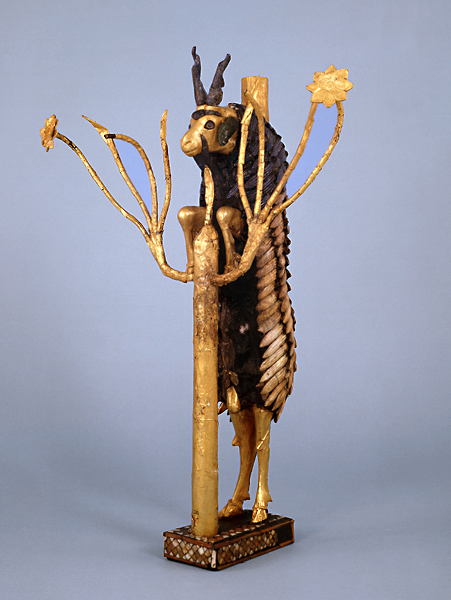
‘Ram in a Thicket’, about 2600–2400 B.C.E., Sumerian, found in tomb PG 1237, Royal Tombs of Ur, southern Iraq, gold, silver, lapis lazuli, shell, bitumen, copper alloy, and red limestone, 45.7 x 30.48 cm (© The Trustees of the British Museum)
The ‘ram’ is more accurately described as a goat, and he reaches up for the tastiest branches in a pose often adopted by goats. Goats and sheep in the Near East were among the earliest animals to be domesticated. They were an everyday feature of agricultural life and are regularly depicted by artists in many different ways.
The figure had been crushed flat by the weight of the soil and the wooden core had perished. Wax was used to keep the pieces together as it was lifted from the ground, and it was then pressed back into shape. The ram’s head and legs are covered in gold leaf, its ears are copper (now green), its twisted horns and the fleece on its shoulders are of lapis lazuli, and its body fleece is made of shell. Its genitals are gold. The tree is covered in gold leaf, with golden flowers, the whole supported on a small rectangular base decorated with a mosaic of shell, red limestone, and lapis lazuli. The tube rising from the goat’s shoulders suggests it was used to support something, most likely a bowl.
© The Trustees of the British Museum


